Home
Niedermarsberg (Provinzialheilanstalt für Geistes- und
Nervenkranke Niedermarsberg)
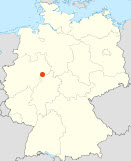
The Kinderfachabteilung in Niedermarsberg (today a part of the city of
Marsberg) was established in November 1940 as the first of (what today is
the state of) North Rhine-Westphalia's three special children's wards and
the approximately fifth one overall. Its establishment in a physically
separate and closed-off ward in a building followed efforts in the summer of
1940 by Hefelmann, one of the main bureaucrats responsible for "euthanasia"
in the Chancellery of the Führer) to open a special children's ward in the
Province of Westphalia. It operated until December 1941, as the
Kinderfachabteilung in Dortmund-Aplerbeck was established there as its
functional replacement. Its closing was at least in part due to the fact
that its operation did not remain secret in a heavily Catholic region and
caused unrest. The special children's ward was housed in the St. Johannes
Stift für Kinder- und Jugendpsychiatrie, which was founded as a
"Idiotenanstalt" ("facility for idiots"), under the auspices of the
Barmherzige Schwestern vom Heiligen Vinzenz von Paul (a Catholic order; the
Sisters of Mercy of Saint Vincent de Paul). The clinic's medical director
was Dr. Theodor Steinmeyer, who committed suicide after his arrest by the
Allies in 1945. Responsible for the special children's ward was Dr. Werner
Sengenhoff, who was recruited for this position from the provincial clinic
in Dortmunt-Aplerbeck. He died in 1944, apparently after an illness.
Additional medical personnel brought in by the Reichsausschuss consisted of
the nurse Olga Ullrich and the nurse assistant Christel Zielke.
With the two physicians dead, Christel Zielke was the only one held
responsible in a court, but her sentence of 3 years and 9 months was for
having cooperated in the killing of 25 patients in the T4 facility Hadamar,
where she had worked as well (she had also worked at Grafeneck and Bernburg;
see Bauer). The events at the Kinderfachabteilung never came under judicial
review (see Teppe 1993; Hanrath, p. 96).
It has been estimated that of a maximum of 53 children housed in the special
children's ward, most if not almost all became victims of "children's
euthanasia" (Kersting, in Köster, p. 13, specifies the number of actual
victims as at least 36, based on the earlier research of Teppe).
In the immediate postt-war period, the initial conference of the directors
and head administrators of medical and care facilities in the province
commemorated those who had fallen in the war yet did not mention those who
had perished under the "euthanasia" measures. After pressure from American
presecutors in the context of the Nuremberg and the British occupation
authorities as well efforts by the appointed first minister president
of North Rhine-Westphalia, Rudolf Ameluxen, to shed light on the
murder of patients, the provincial association of Westphalia as the larger
communal institution responsible for the general welfare of the population
conducted investigations resulting in reports in 1946-47 on the Euthanasia
crimes in the Province of Westphalia temporarily pierced the veil of
professed ignorance that enveloped the St. Johannes Stift and other places,
confirming that children had been murdered in the Marsberg
Kinderfachabteilung. In fact, at the St. Johannes Stift mistreatment of
patients continued well into the post-war period, as demonstrated in the
notorious case of Paul Brune. In 1952. a review of the post-war
reconstruction of public welfare institutions in the region included a
reference to the murder of patients in the Nazi period. It also made mention
of 35 victims of children's euthanasia in Niedermarsberg (Naunin 1952, p.
94).
In 1983, on occasion of the beginning of the Nazi dictatorship in 1993, the
then director of the Regional Council (Landschaftsverband) of
Westfalen-Lippe, Herbert Neseker, and the Council Committee
(Landschaftsausschuss) initiated a review of the history of the
Provinzialverband der Provinz Westfalen (the Provicial Association of the
Province of Westphalia), the historical predecessor of the Regional Council,
during the Nazi period, specifically in the area of psychiatric care, a task
it commissioned its research institute to carry out. Dr. Karl Teppe of the
Institute of Westphalian Regional History (LWL-Institut für westfälische
Regionalgeschichte) informed the Assembly of the Regional Council of
Westphalia-Lippe in August 1989 in his lecture "On the Value of Life (and
Lack thereof) during the years of National Socialism: Hitler's
'Euthanasia'-Decree of 1 Sept. 1939" of the mass murder among psychiatric
patients and engendered public interest in the subject matter. His written
report (Teppe 1989) included references to "children's euthanasia" at
Niedermarsberg.
 Source:
author.
Source:
author.
The church of the clinic (see http://www.lwl.org/psychiatrie-marsberg-download/PDF/LageplanKlinik20090220.pdf, no. 05 on the map) has
a memorial stone with the inscription "In memory of patients murdered
during the tyranny of National Socialism. Let it be a warning to us today"
(Im Gedenken an die während
der Gewaltherrschaft des Nationalsozialismus ermordeten Patienten.
Zur Mahnung uns heute). It does not address or thematize children's
euthanasia specifically. It was created by sculpting company Steinmetz
Köchling in Marsberg and placed in the summer of 1989. The inscription was
created by the Protestant priest Rolf Kiefer.
Source: LWL.
However, at the entrance of house 11 a memorial was placed in Dec. 1989 that
does (see above and also http://www.lwl.org/psychiatrie-marsberg-download/PDF/LageplanKJP20090220.pdf).
It
was created by the artist Reinhard Lischka and shows a sculptural display
with the shapes of three children under two arms ascending. The text on the
display reads "Not knowing hurts nobody, except for those who are hurt,
because no one knows it! (Anon.) (Nicht Wissen tut niemandem weh, mit
Ausnahme derer, denen weh getan wird, weil niemand es weiss! [Anon]). Below
it there is a plaque with the text "The knowledge of the suffering and
murder of the children in our home during the Nazi rule of terror is
enduring warning to us." On occasion of the 125th anniversary of the clinic,
an exhibit took place at the location, and a small zen garden in the central
building was created to offer a place of peace.
Source: author.
Source: author.
An innovative commemoration project that is unique in its kind was launched
as the project "Idiotenfriedhof" (a reference to the cemetery of the
originally named "Idiot facility," where many of the child victims were
buried). It consists of two parts: first, an art installation by the artist
Astrid Raimann at the entrance to the cemetery (established in 2004), which
constitutes a 3x3m tube frame of a rectacular shape. It marks a boundary,
and it is meant to generate questions in the observer: a boundary of what
kind? Between what or whom? From and to where? Next to the frame is a small
sign with the following words: "HERE AND THERE 1940-1941-2004" (HIER
UND
DA 1940-1941-2004). Various school classes come visit this memorial
(for a report, see here).
Behind it, a sign points to a memorial on the cemetery grounds. The
inscription on it reads: "Against forgetting. In memory of the murder of
innocent children in St. Johannisstift Marsberg during the National
Socialist tyranny December 1940 - end of 1941" (Gegen Vergessen. Zur
Erinnerung an die Ermordung unschuldiger Kinder im St. Johannisstift
Marsberg während der nationalsozialistischen
Gewaltherrschaft Dezember 1940 bis Ende 1941). It was placed there in 2000,
and on 23 June 2001 a commemorative religious service was held there. A newspaper article notes that 18 of the
Reichsausschusskinder are buried in this cemetery.
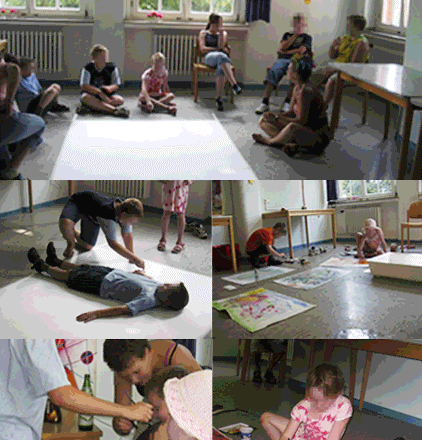 Source:
http://www.idiotenfriedhof.de/Bilder/Bilder/big_aquarell_04.gif
Source:
http://www.idiotenfriedhof.de/Bilder/Bilder/big_aquarell_04.gif
Second, creative workshop projects are carried out with young patients at
the clinic since 2002. These include workshops in
2002: stone sculpting, with sculptor Astrid Raimann
2003: video workshop, with film producer Besime Atasever
2004: comic workshop, with comic author Julia Drinnenberg
2005: building and playing string puppets, with metal sculptor Kordula Klose
2006: water color painting, with painter Christina Stoschus-Schumann
2007: creative writing and improvisation theater, with writer Arzu Toker
2008: water color painting, with painter Christina Stoschus-Schumann
2009: stone sculpting, with sculptor Astrid Raimann
2010: painting, with painter Rosa Reichenbach
2011: painting, with painter Rosa Reichenbach
2012: creative writing and improvisational theater, with writer Arzu Toker
2013: sculpting workshop, with sculptor Astrid Raimann
2014: creative writing, with artist Sookee
2015: dance workshop, with dance therapist Ute Seddig
The art installation and living memorial are depicted on the following website, weblog, and blog.
Reviews/comments in English/German also exist. Most recently,
there is also a Facebook page. A film by J. Oppermann, "Finde Deine
Form" (Find your form), about one of the workshops was produced and released
in 2013.
The website of the clinic today does not mention the
"Euthanasia" crimes on its premises. Instead, in its survey of its history
it points to the existence of "compulsory sterilizations and forced
transfers with the intent to kill [patients elsewhere]"--a curious depiction
of the historical events. In contrast, in its book on the 125th anniversary
the institution addresses the crimes during the Nazi era in great detail.
The Regional Council of Westfalen-Lippe addresses "euthanasia"-crimes in its
account of the history of the Provinzialverband (der
Provinz Westfalen), its historical predecessor. The section on psychiatry
between 1933 and 1945 is detailed and includes a section on the
Reichausschuss (LWL-PsychiatrieVerbund Westfalen und LWL-Kulturabteilung
2010, pp. 48-60). It further addresses Niedermarsberg under the heading
"Commencement of Child Murder" on its Internet portal "Westphalian History"
(here).
A memory of a child who is described as a belated victim of "children's
euthanasia" at this location (she died in August 1945) is preserved here. Another young person's history (who died in
1942) is described here.
A recent documentary by the WDR addressed "The Hell of Pediatric Psychiatry:
Violence and Abuse Behind the Institution's Walls," focusing on the period
between 1945 and 1980 (here).
A list of victims from Gelsenkirchen has been posted by the Stolperstein
initiative there, and the list includes the (anonymized) names of children
who died here (see http://www.stolpersteine-gelsenkirchen.de/ns_krankenmorde_gelsenkirchen.pdf),
with specific references to the "Kinderabteilung Niedermarsberg."
Literature
Bauer, Fritz et al., eds. 1968-1981. Justiz
und
NS-Verbrechen: Sammlung deutscher Strafurteile wegen
nationalsozialistischer Tötungsverbrechen, 1945-1966. Amsterdam:
University Press Amsterdam. No. 17, pp. 329-30 (for Zielke).
Benzenhöfer, Udo. 2003. "Genese und Struktur der 'NS-Kinder- und
Jugendlicheneuthanasie.'" Monatsschrift
für Kinderheilkunde 151: 1012-1019.
Berg, Birgit. 2001. "Düsseldorfer Kinder als Opfer der 'Kindereuthanasie' -
eine Spurensuche." Pp. 119-39 in Erbbiologische
Selektion und "Euthanasie": Psychiatrie in Düsseldorf während des
Nationalsozialismus, edited by F. Sparing and M.-L. Heuser. Essen:
Klartext.
Hanrath, Sabine. 2002. Zwischen "Euthanasie" und Psychiatriereform:
Anstaltspsychiatrie in Westfalen und Brandenburg: Ein deutsch-deutscher
Vergleich (1945-1964). Paderborn: Ferdinand Schöningh.
Kersting, Franz-Werner. 1996. Anstaltsärzte
zwischen Kaiserreich und Bundesrepublik: Das Beispiel Westfalen.
Paderborn: Ferdinand Schöningh.
———, and Hans-Walter Schmuhl, eds. 2004. Quellen
zur Geschichte der Anstaltspsychiatrie in Westfalen. Paderborn:
Schöningh.
Köster, Markus. 2005. Lebensunwert: Paul
Brune: NS-Psychiatrie und ihre Folgen: Begleitheft zur DVD.
Münster: Landschaftsverband Westfalen-Lippe. Available at http://www.lwl.org/lmz-download/medienproduktion/lebenunwert.pdf
Lisner, Wiebke. 2006. "Hüterinnen der
Nation": Hebammen im Nationalsozialismus. Frankfurt: Campus.
(Here: 274-78)
LWL-PsychiatrieVerbund Westfalen und LWL-Kulturabteilung, eds. 2010. Psychiatrie in Westfalen. Munster:
LWL-PsychiatrieVerbund Westfalen. Available at http://www.lwl.org/psychiatrieverbund-download/pdf/LWL-Psychiatrie_29.09.10.pdf
Mertin, Sonja, and Helmut Fahle. 2006. 125
Jahre St. Johannes-Stift, 1881-2006. Marsberg: Landschaftsverband
Westfalen-Lippe.
Naunin, Helmut. 1952. Landschaftliche
Selbstverwaltung: Wiederaufbau in Westfalen 1945-1951. Dortmund:
Ardey.
Oppermann, Jörg. 2013. "Finde Deine Form: Ein Workshop von Kunst in der
Klinik in der Jugendpsychiatrie Marsberg." Cologne: N.p.
Projekt Idiotenfriedhof on Facebook.com. Available at https://www.facebook.com/pages/Projekt-Idiotenfriedhof/256207254407671.
Puvogel, Ulrike, and Martin Stankowski. 1996. Gedenkstätten
für die Opfer des Nationalsozialismus, vol. 1. 2d ed. Bonn:
Bundeszentrale für politische Bildung. Available at http://www.bpb.de/files/5JOYKJ.pdf.
Teppe, Karl. 1989. Massenmord auf dem Dienstweg: Hitlers
"Euthanasie"-Erlass und seine Durchführung in den westfälischen
Heilanstalten. Münster: LWL.
———. 1993. "Bewältigung von Vergangenheit? Der westfälische
'Euthanasie'-Prozess." Pp. 202-52 in Nach
Hadamar: Zum Verhältnis von Psychiatrie und Gesellschaft im 20.
Jahrhundert, edited by F.-W. Kersting. Paderborn: Ferdinand
Schöningh.
Topp, Sascha. 2004. “Der ‘Reichsausschuss zur wissenschaftlichen Erfassung
erb- und anlagebedingter schwerer Leiden’: Zur Organisation der Ermordung
minderjähriger Kranker im Nationalsozialismus 1939-1945.” Pp. 17-54 in Kinder in der NS-Psychiatrie, edited by
Thomas Beddies and Kristina Hübener. Berlin-Brandenburg: Be.bra
Wissenschaft.
———. 2005. "Der 'Reichsausschuß zur wissenschaftlichen Erfassung erb- und
anlagebedingter schwerer Leiden': Die Ermordung minderjähriger Kranker im
Nationalsozialismus 1939-1945." Master's Thesis in History, University of
Berlin.
Walter, Bernd. 1996. Psychiatrie und
Gesellschaft in der Moderne: Geisteskrankenfürsorge in der Provinz
Westfalen zwischen Kaiserreich und NS-Regime. Paderborn: Ferdinand
Schöningh.
———. 2001. "Die NS-'Kinder-Euthanasie'-Aktion in der Provinz Westfalen." Praxis der Kinderpsychologie und
Kinderpsychiatrie 50:211-27.
Last updated on 29 May 2015
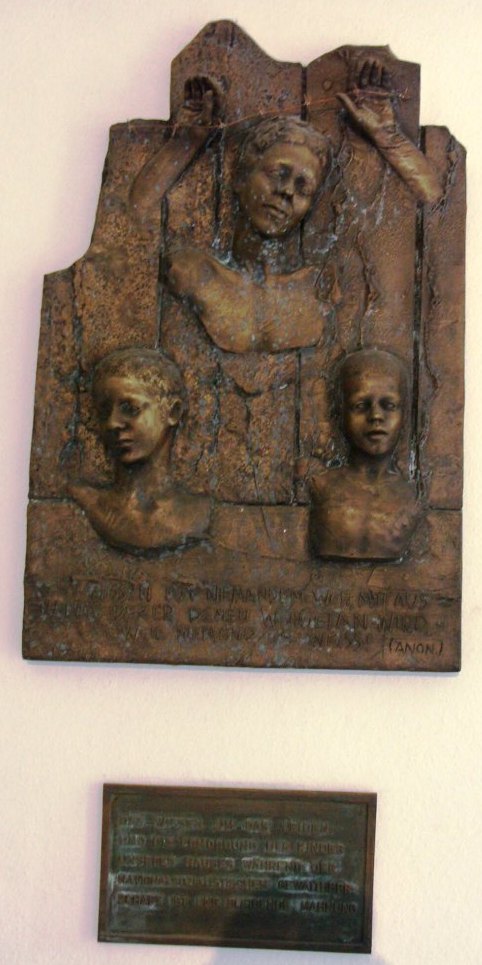
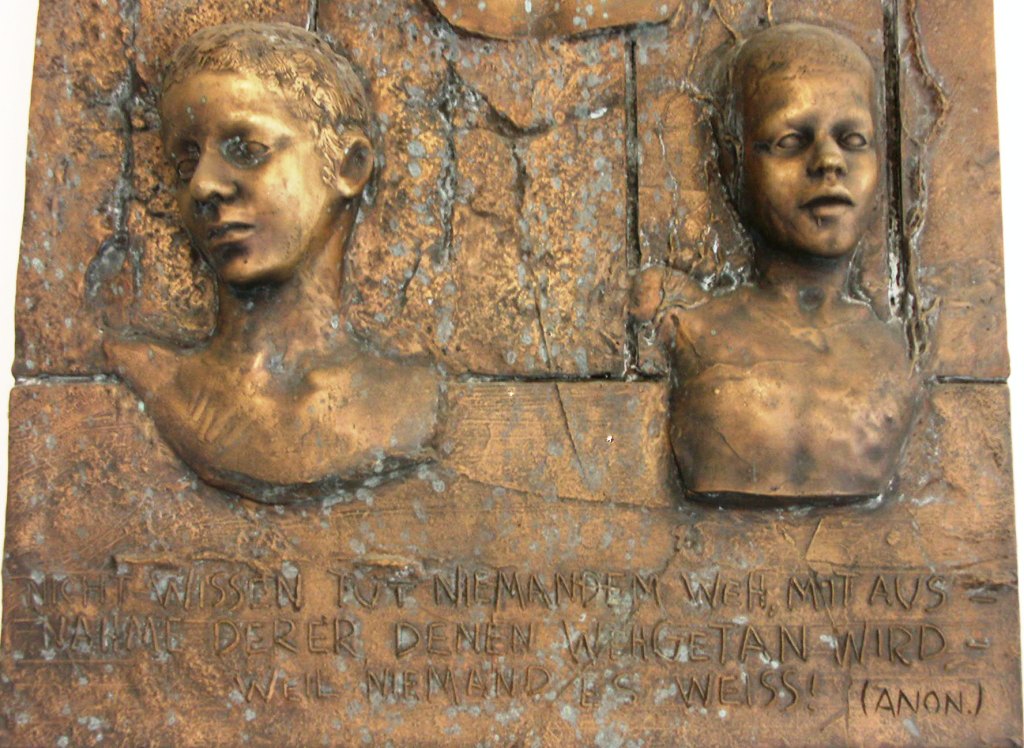
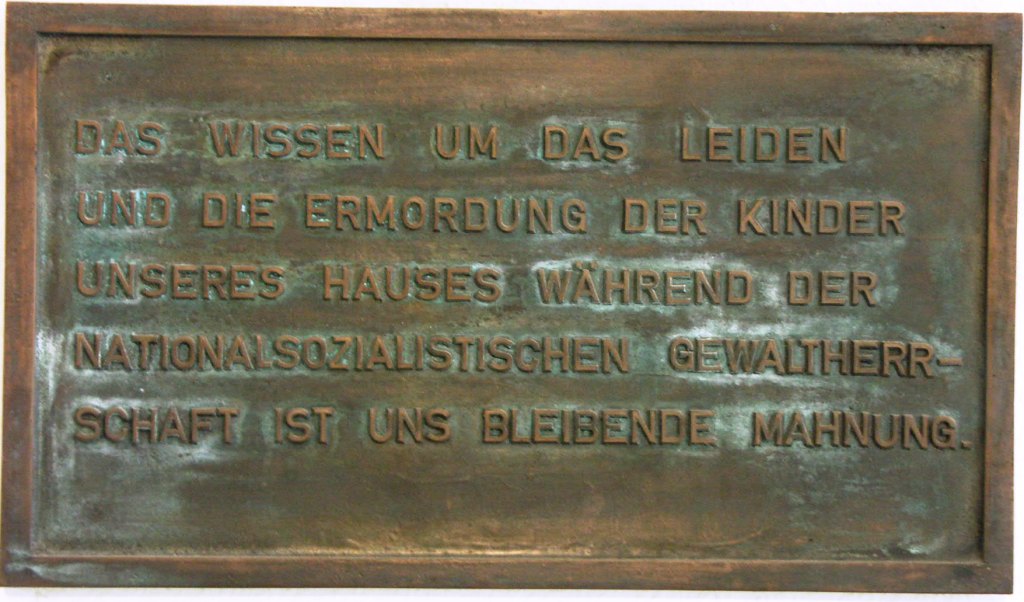

 Source:
author.
Source:
author.


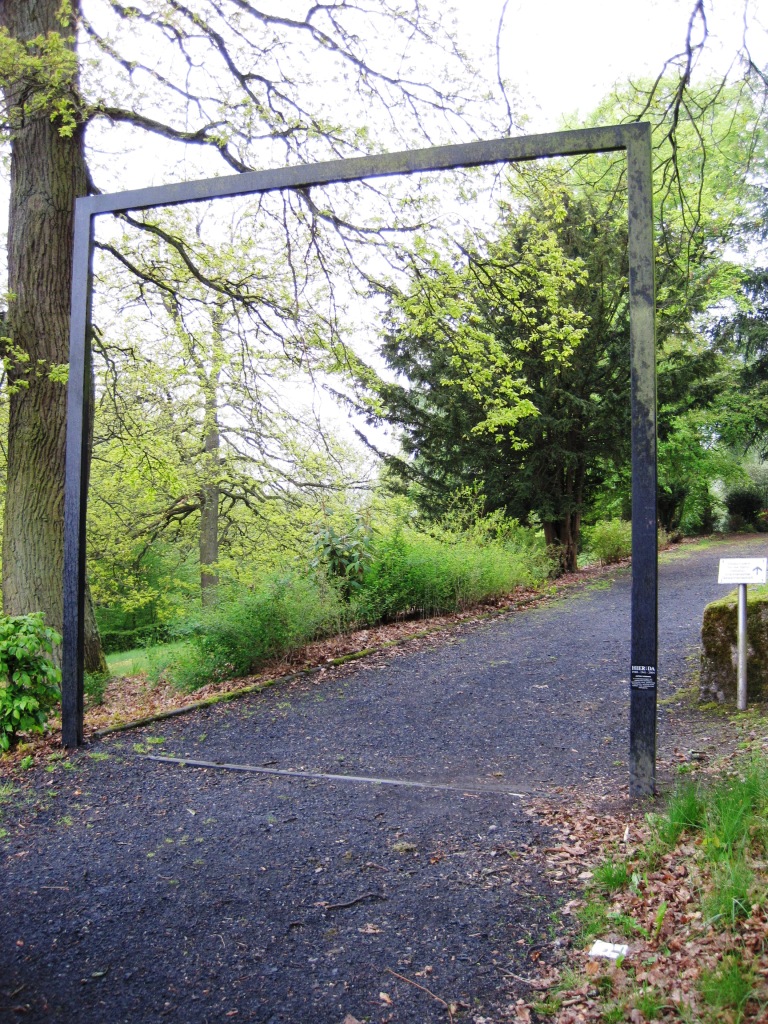
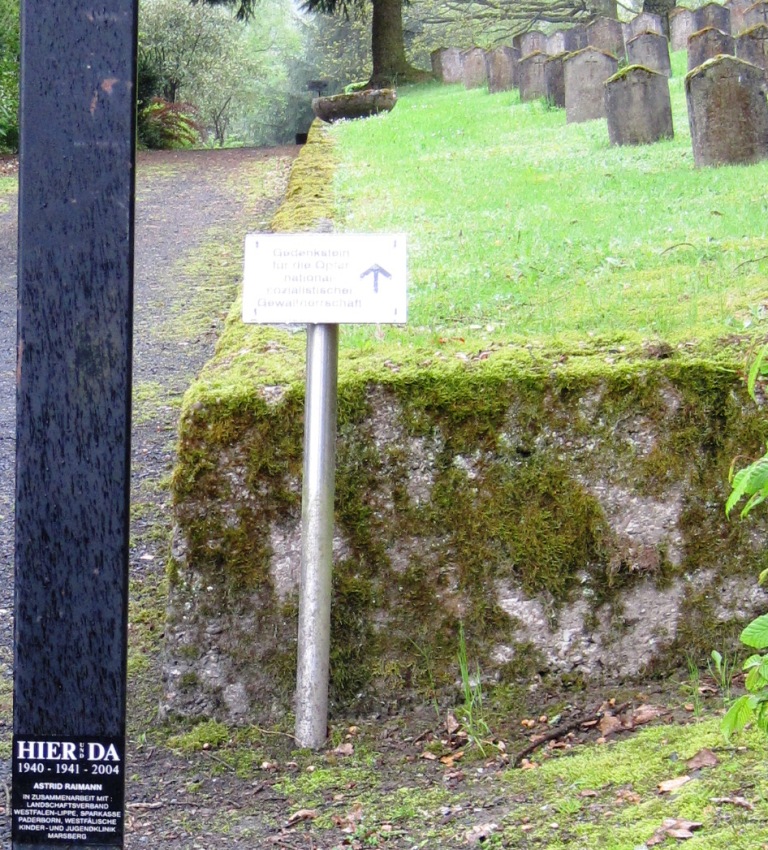
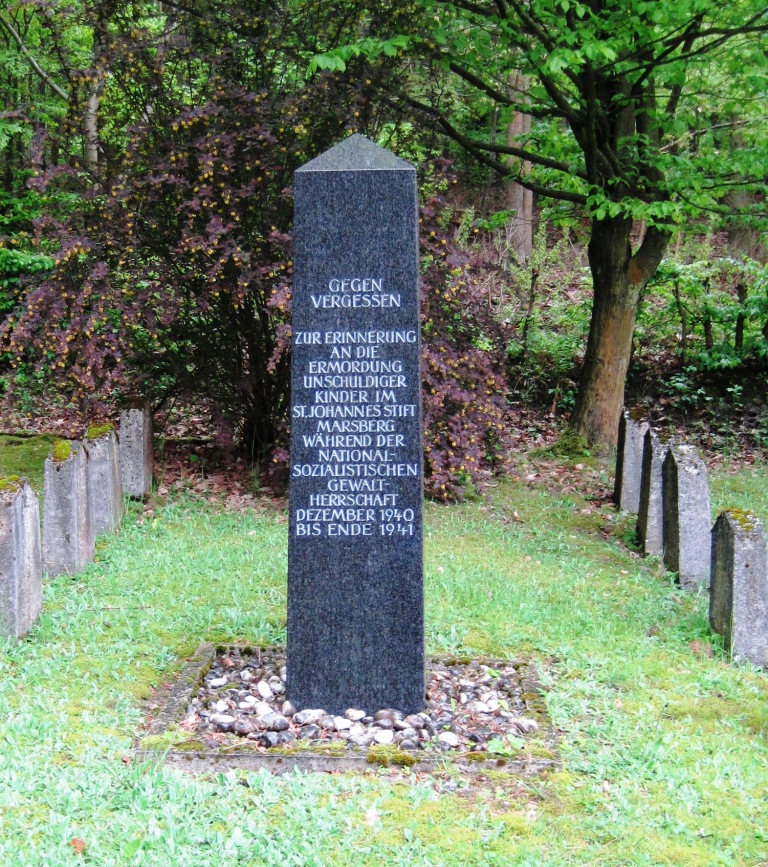

 Source:
http://www.idiotenfriedhof.de/Bilder/Bilder/big_aquarell_04.gif
Source:
http://www.idiotenfriedhof.de/Bilder/Bilder/big_aquarell_04.gif